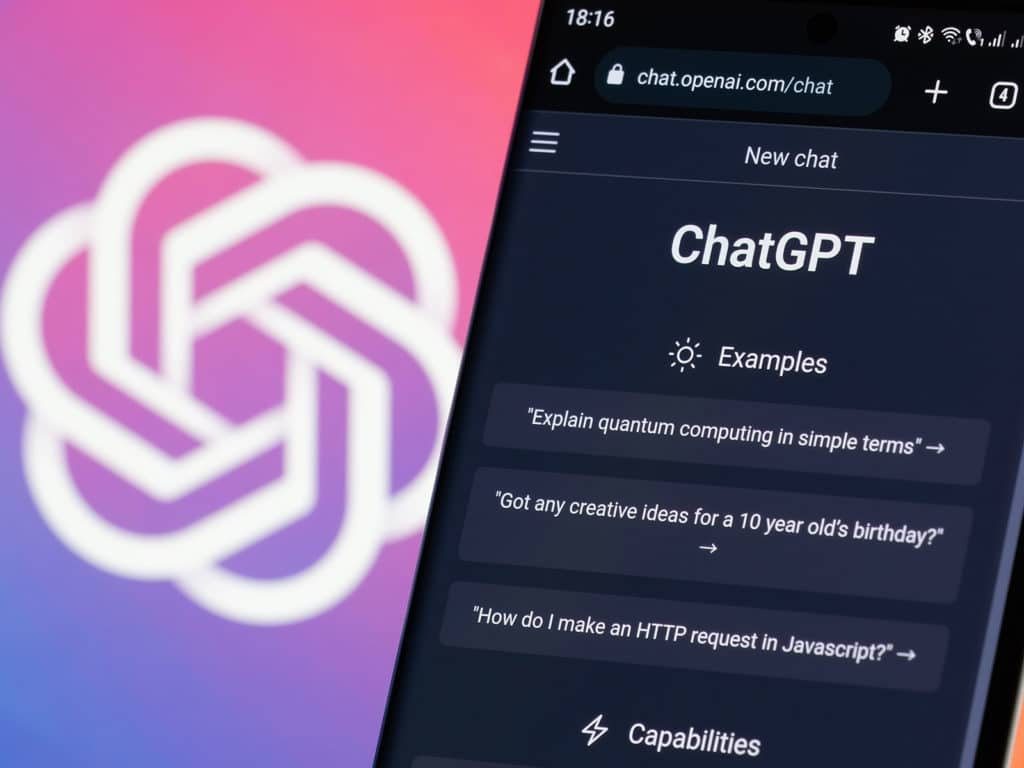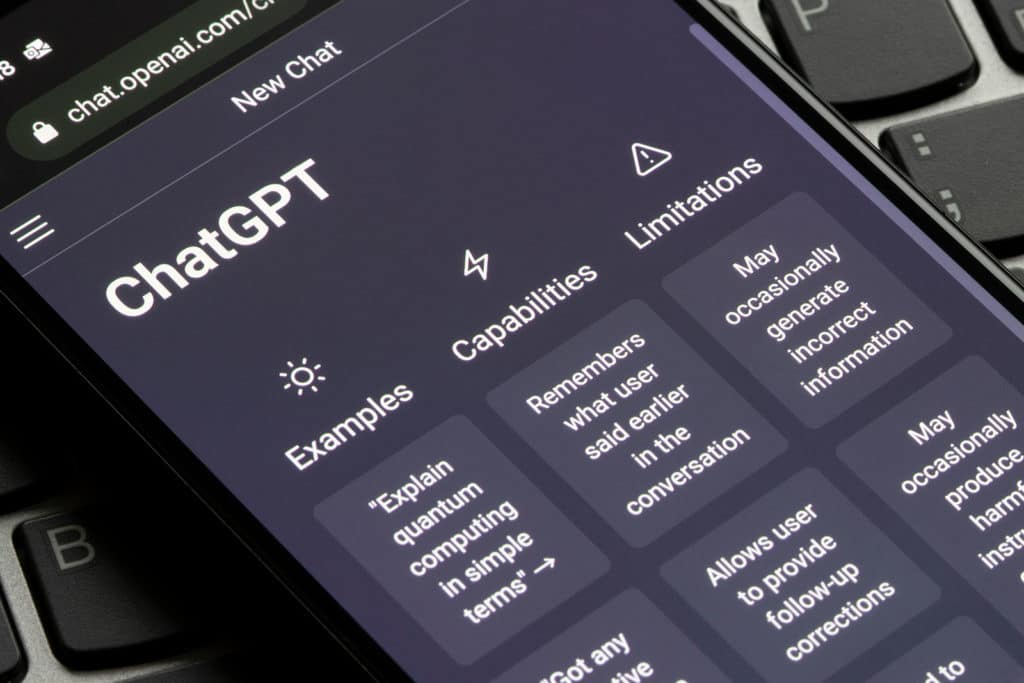Ask yourself what’s the hardest and most time-consuming part of any content marketing task. Like most people, you’ll probably answer it’s the content creation aspect.

Besides time, you need ideas—and plenty of them—that relate well with your customers.
And don’t get us started with having to spend hours brainstorming and coming up with content marketing strategies to reach your intended audience.
That said, you may be looking for ways to streamline your workflow and cut down the time you typically spend drafting content.
Artificial intelligence tools like OpenAi’s ChatGPT have been all the rage in digital marketing, and we’re on board with it. But there are also caveats to it you should be aware about.
Keep reading to learn six effective ways to use ChatGPT optimization for SEO, along with the possible risks to watch out for and how to avoid them.

Table of Contents
6 Effective Ways to Use ChatGPT For SEO Optimization
The advancements in AI tools and natural language processing chatbots come with many convenient perks. Below are six ways you can use one for search engine optimization.
1. Use GPT as a Keyword Research Assistant
If you’ve been in this industry for a while, you know how crucial keyword research is to rank well in the search engine page results (SERP).
Researching keywords is invaluable for finding high-volume topics you can cover. It informs you about user intent and the general thought that goes into people when looking for your services and products.
There are plenty of comprehensive tools for keyword research, but a little help to get you off the ground should be welcome.
For starters, you can use ChatGPT as an effective keyword research assistant.
Note, however, that ChatGPT isn’t reliable if you’re using it as your only tool for researching relevant keywords. Its dataset is limited, and it can’t access live web pages nor provide real-time SEO forecasts.
Still, used alongside Semrush or Ahrefs, GPT can be useful when brainstorming for keyword ideas. You may even specify what you want: long-tail, short-tail, or natural language entities.
Here’s a sample of a keyword research prompt:
“Give me 10 long-tail keyword ideas related to the role of artificial intelligence in e-commerce.”
After getting an output, try using keyword research tools to verify their relevance and search volume. ChatGPT can be skillful in understanding user intent, but you shouldn’t rely on the information you get from the AI.
2. Allow ChatGPT to Formulate Topic Clusters
Topic clusters are a way to organize your website so it’s easier for visitors to navigate your content. By grouping related topics, you’re signaling to search engines that you’re an authority in a specific niche.
ChatGPT’s language AI model can be useful for generating topical clusters and interlinking opportunities to improve your site’s structure.
For instance, let’s say you’re running a website specializing in health insurance. You want to create high-quality content and build authority on the keyword “types of health insurance plans.”
You can ask GPT to provide topic cluster ideas with a simple prompt like:
“Give me topic cluster ideas for the keyword ‘types of health insurance.’”
You can also make your ChatGPT prompts more detailed by specifying what types of content you want to focus on or providing contexts about your services.

3. Prompt ChatGPT to Insert Keywords Naturally
Search engines primarily use keywords to filter organic search results. To increase your chances of appearing in SERPs, you must learn how to use them effectively within your content.
It’s more than just cramming as many keywords and phrases into your blogs and articles. Ideally, you want to incorporate the terms and phrases as naturally as possible, which can be tedious, but you can use an AI for this.
A straightforward prompt would be to give ChatGPT a copy of your content and a list of your keywords. Then ask it to insert the words as organically as possible.
Others may find better results by giving the AI a “role” when prompting. Here’s an example of how the prompt can look like:
“I want you to think like an SEO expert. I will provide a copy of an article, including a list of keywords. I want you to rewrite the article and incorporate all the keywords naturally where they make sense.”
4. Generate Meta Descriptions and Meta Titles
Besides inserting keywords, ChatGPT can be helpful in generating metadata that search engines will love.
Meta descriptions provide a summary of a web page. They provide clear takeaways that users can read in the search results.
On the other hand, meta titles are the texts displayed in bold in Google search results. Like meta descriptions, meta titles give users a sneak on the primary topic of your page.
When written well, both metadata can convey the relevance of your content, which can attract visitors and improve your click-through rates.
To generate a meta description or title, you want to provide ChatGPT with your content’s title, or the primary keyword you wish to rank on. We also find it best to limit the characters following Google’s policies.
You can instruct ChatGPT to:
“Write a unique meta title and meta description for the keyword, “types of health insurance plans.” The meta title shouldn’t exceed 60 characters, while the meta description should be within 140-160 characters.”
Metadata automation is great, but don’t forget to add some personal touch to it, too. AI is prone to spout generic nonsense so make sure you rewrite so that it represents your brand’s voice and tone.
5. Identify Internal Linking Opportunities With GPT-4
Internal links are hyperlinks within your own pages pointing the users to other relevant content within your website. They’re different from external links, which redirect your visitors to other domains.
This practice is what we call internal linking. It’s one of the most important SEO strategies as it helps Google find, remember, and understand every page on your website.
If you’re subscribed to GPT-4 or higher, you can use it to search for internal linking opportunities on your site. Unfortunately, GPT-3.5 won’t be able to do that because it can’t browse pages and analyze their data.
With GPT-4, you can directly ask the AI to look for pages you can link to on your website. This makes the tedious work of manually searching for articles to hook up with your new content easier.
The prompt can be as brief as the following:
“Search for articles to link to on this topic on the website [your domain here].”
Apart from internal linking, GPT-4 can streamline your external link-building process just as well. You can ask the chatbot to find sources from reliable websites to link to and improve your domain’s authority in Google’s eyes.
6. Make High-Quality Content With Creative ChatGPT Prompts
Many use ChatGPT for content creation. However, instead of relying on AI for writing and risking quality, it’s best to use it as a smart creative partner.
High-quality content remains the most crucial ranking factor. With the right prompts, you can utilize these AI-powered language models to refine your writing style and provide real value to your readers.
ChatGPT can be a wonderful companion for proofreading your content. After feeding the AI a copy of your work, you can ask it to do the following:
- Check and correct grammatical and spelling errors.
- Suggest improvements to enhance a manuscript’s readability.
- Recommend tone and voice changes to match your brand.
- Think of relevant questions you can add to the FAQs section.
There are plenty of step-by-step tutorials online where writers use GPT creatively. From writing catchy headings to drafting click-worthy outlines, there’s a limitless potential for AI in digital marketing.

What Are the Potential Risks of Using ChatGPT For SEO?
It’s worth remembering that while machine learning resources like ChatGPT can be useful in your SEO practices, they don’t replace the tools dedicated to such purposes.
One of the risks of AI in creating SEO content is it may not align with Google’s criteria of E-A-T. That stands for expertise, authoritativeness, and trustworthiness.
There’s always the possibility of these AI models hallucinating. They can make up facts, provide inaccurate information, and exhibit biases, hurting your website’s credibility and authority.
It’s particularly dangerous for websites dealing with YMYL topics, where everything you put out can affect someone’s major life decisions.
AI models can produce content, suggest keywords, and find linking opportunities within seconds. But you’ll still need to cross-check everything they generate to ensure they’re factual.
To get around these hitches, it’s best to combine an AI’s capabilities with your own SEO expertise. Using ChatGPT alongside tools like Ahrefs and Semrush provides the best results.
Final Thoughts
You can think of ChatGPT as an extra employee to help streamline your tasks. You can use it for researching keywords, brainstorming ideas, and content optimization, but you can’t rely on it alone.
Human oversight and dedicated SEO tools are crucial if you are to create helpful content that ranks well.
Yet, we wouldn’t deny that we may be at the tip of the iceberg here. As AI technologies evolve, the exciting opportunities they can provide in the SEO landscape will only grow.
Published on: 2024-11-06
Updated on: 2024-11-08